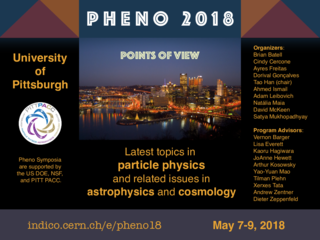Speaker
Description
In non-minimal supersymmetric (SUSY) models, additional tree-level
contributions to the Higgs mass provide a possible solution to the little
hierarchy problem of the minimal supersymmetric standard model (MSSM). This
has generated increased interest in models such as the next-to-MSSM (NMSSM),
on the grounds that they may be more natural than the MSSM. However,
traditional measures of fine-tuning do not provide a well-defined method for
making such comparisons, since the outcome depends heavily on the particular
definition of fine-tuning chosen. We contrast the results of applying such
measures to the constrained MSSM and a semi-constrained NMSSM with those
obtained using so-called naturalness priors. The latter arise automatically
in the context of a Bayesian analysis quantifying the plausibility that a
given model reproduces the weak scale. Consequently, these naturalness priors
have a well-defined probabilistic interpretation, and allow naturalness to
be rigorously grounded in Bayesian statistics. We find that results based
on naturalness priors agree qualitatively with the traditional measures of
fine-tuning used, and illustrate how naturalness priors can provide
valuable insight into the hierarchy problem.

